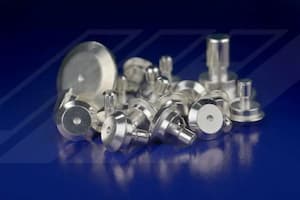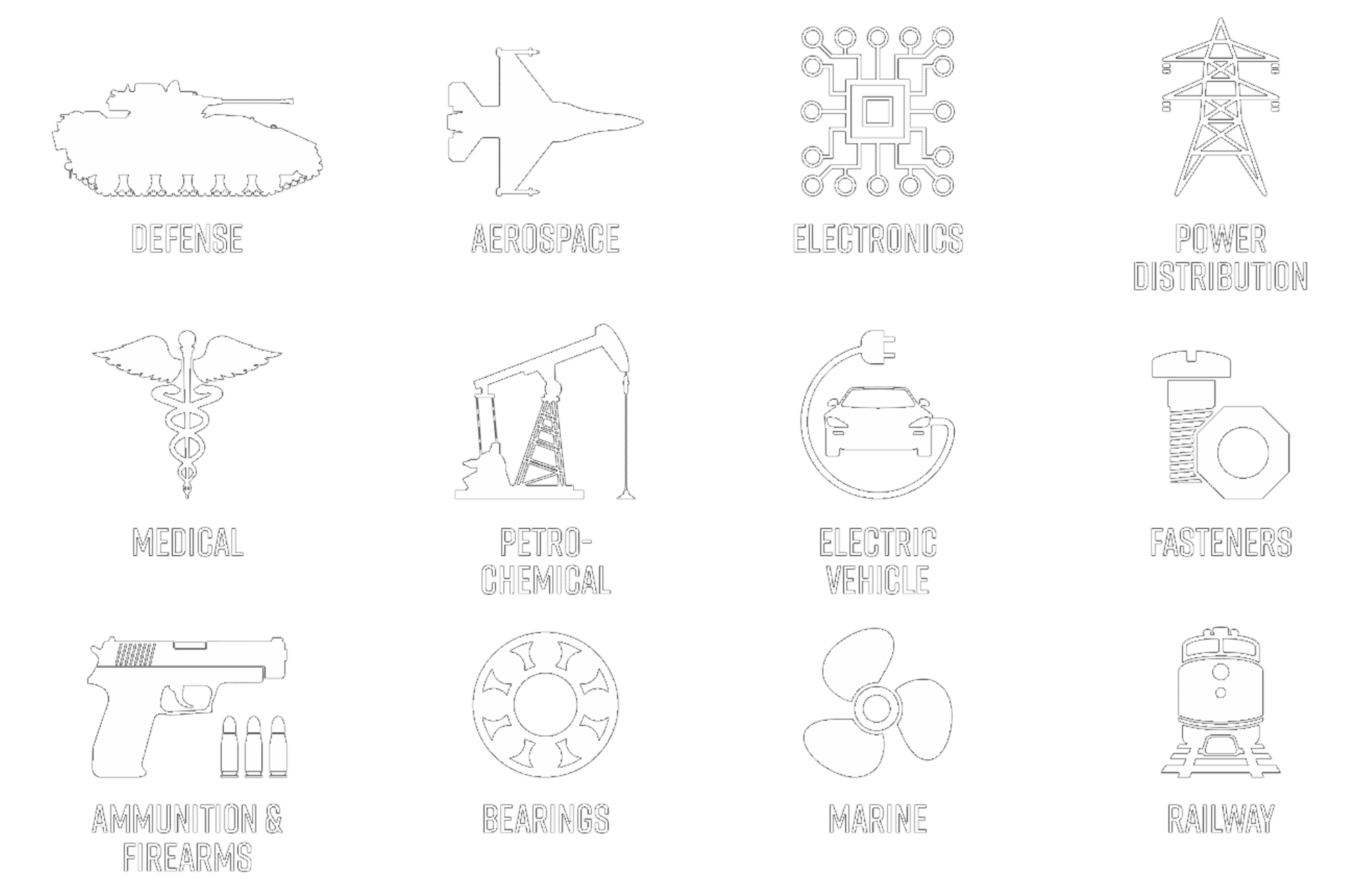
Revision: 31201
Finish: Silver
Company: Federal Specification
Application: Silver deposits are defined as follows: Type I (Matte), Type II (Semi-bright), Type III (Bright), Grade A (with supplementary tarnish-resistant treatment), Grade B (without supplementary tarnish-resistant treatment)
Appearance: Varies by Type
Plate Thickness: per 3.4.1 – Unless otherwise specified the minimum plating thickness shall be 0.0005″ on all surfaces on which silver is functionally necessary (for example: appearance, wear, corrosion protection, conductivity). The plating on non functional surfaces and areas shall be of sufficient thickness to ensure plating continuity and uniform utility, appearance, and protection. On ferrous surfaces the total plated thickness shall be not less than 0.0010″. This must be comprised of at least 0.0005″ or more of silver plate over 0.0005″ or less of nickel or copper or any combination thickness of nickel and copper from 0-100%. The copper shall be deposited first over the steel surface.
Strike Thickness: per 3.3.5 – The final silver deposit shall be preceded by an electrodeposited coating of silver from silver strike solutions. Then plating shall be applied over an intermediate coating of nickel or nickel over copper on steel, zinc and zinc-base alloys. Copper and copper base alloys require intermediate coatings. Copper-alloy basis metal articles on which a nickel undercoat is not used and other basis metal whereon a copper undercoat is employed shall not be used for continuous service at a temperature in excess of 300F. Adhesion of the silver plating is adversely affected because of the formation by diffusion of a weak eutectic of silver and copper at the silver-copper interface.
Notes: QQ-S-365 makes no distinction of purity in the specification. Only the appearance of the deposit is addressed in the Type callout.
Back to Spec Database
The information provided within the Advanced Plating Technologies’ database is for reference only and is not intended to be a comprehensive summary of any specification’s content. Rather the database was designed to provide a brief summary of the specification’s subject matter to provide a sound context of the specification’s contents and engineering purpose. Advanced Plating Technologies cannot guarantee that the specifications contained therein are the most current revisions. In addition, Advanced Plating has no affiliation with any of the organizations, agencies or companies contained within the database. We hope you find the APT specification database a useful online resource and value any feedback you may have. Although the data provided in this database has been obtained or adapted from sources that are believed by us to be reliable, no warranty expressed or implied is made by us regarding the accuracy, adequacy, completeness, reliability or usefulness of any data. The data is provided strictly for reference purposes. Only our standard product and service warranties apply to finished goods supplied by Advanced Plating Technologies. To the extent that any third party company or agency is identified as a data source, Advanced Plating Technologies is not associated with such company or agency and that such company or agency is not identified for purposes of advertising, endorsement or recommendation by APT. If you find any errors or omissions in the data, we encourage you to report them to us.







